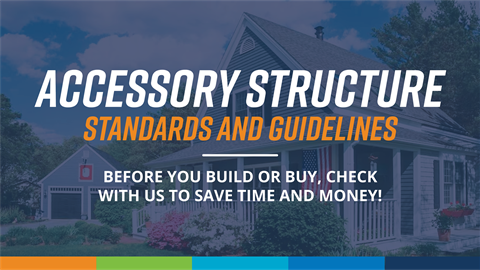Accessory Structures: A Guide to Residential Zoning Compliance
Published on December 12, 2023

When it comes to constructing accessory structures in residential zoning districts, it's crucial to adhere to specific guidelines to ensure compliance and harmony within the community. Below are some examples of acceptable accessory structures allowed in these zones. Click here for a helpful handout to guide you through your next project.(PDF, 1MB)
Zoning District Considerations:
All accessory structures are permitted in the rear yard, provided they meet required setbacks. It's important to note that placing these structures in the side or front yard is not permitted. However, attached carports and garages can be strategically located in the side yard, as long as they adhere to setback requirements.
Before You Build:
Prior to starting any construction project, it's strongly advised to consult with the relevant authorities to confirm compliance. Obtaining the necessary building permits, reviews, and inspections is not just a formality – it can save you both time and money in the long run. A proactive approach can help you avoid fines and code violations, making it essential to check with the appropriate authorities first. Any questions can be directed to 816-331-4331 for clarification and guidance.
Detached Garages:
For those considering detached garages, there are specific criteria to follow. The garage's size should not exceed 800 sqft or 5% of the lot area, whichever is greater. Accessory dwelling units must adhere to the same setbacks and coverage requirements. Accessory structures, including detached garages, should not surpass the height of the primary structure. Driveways leading to garages must be hard-paved surfaces, with limitations on coverage in the front yard – not exceeding 35%, or 50% if situated on a cul-de-sac. Garages facing a street must maintain a distance of at least 25 feet from the street right-of-way line.
Storage Sheds:
When considering storage sheds, a permit is mandatory for structures larger than 120 sqft up to a maximum of 200 sqft. All detached accessory structures, including storage sheds, must be situated in the rear yard. Importantly, these structures cannot be constructed on any easements, including drainage, utility, or access easements.
Carports:
It's important to note that temporary, detached, metal carports are not permitted. All carports must meet setback requirements and have driveway access. Further details can be found for reference.
Understanding and adhering to these guidelines will not only ensure your project's legality but will also contribute to the overall aesthetics and functionality of the residential environment. Always consult with the relevant authorities to streamline your construction process and foster a compliant and harmonious community.